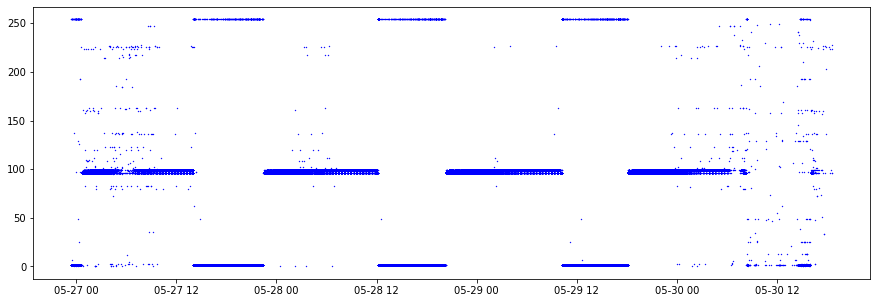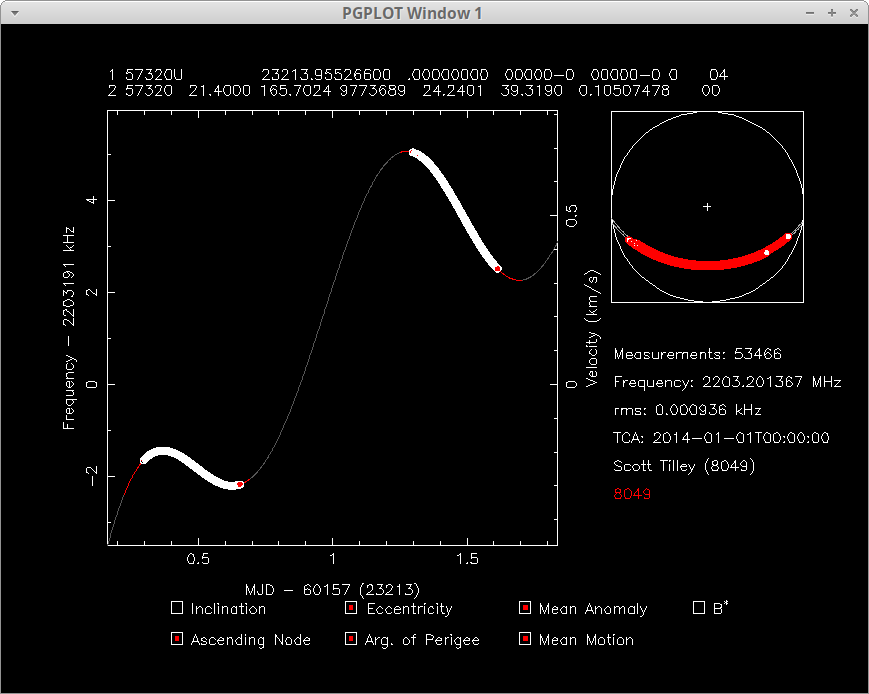Following the penumbral eclipse of LES-5 on 2020-09-05 I've been able to identify all of the data words that are sensitive to solar illumination. Interesting patterns noted may help gain some insight into the present operation of the attitude control system. [THREAD]
36 of 128 data words responded to the penumbral eclipse(PE). A PE is the only way to know which data words are sensitive to solar illumination as LES-5 switches off during umbral eclipses. PEs only occur twice during each equinox and it may not be visible to me. So I got lucky. 

Now I was able to see what appeared as relatively undynamic data words reveal they were sensitive to solar illumination. Frame1 word23 and frame3 word23 jumped out as they appeared to respond to something relating to the period of the LES-5. 



Now overlay F1 W23 and F3 W23 with two words suspected from the beginning of our monitoring efforts as being Sun or Earth sensor data and related that to LES-5's angle to the Sun and some magic jumps out as this plot of pass 2's data shows. 

I've added in some references to make reading the plot easier. The green line is the Sun angle from LES-5's perspective. 0 is noon, 180 midnight and 90 and 270, 6am and 6pm respectively from the satellite's perspective. What's going on at ~3pm LES-5 time (45 degrees)? 

It turns out LES-5 was designed to make attitude control measurement at the 9am and 3pm points in its orbit. Or +/- 45 degrees from noon from it's perspective. 

The Sun/Earth sensing system acts like a real time clock on LES-5 and doesn't send real time telemetry as it operates during each rotation of the satellite ~10 seconds. But I suspect based on the results above that it sends a summary of the data. 

I then examined the timing of noon on LES-5 to the change in frame3 word23 over all of the passes I have received data from and as you can see this angle remains close to 45 degrees. I also looked at the total data copied and plotted to see if there is a correlation. 

If you look at the F0 W27 and F1 W23 you see a strong correlation between the two. F1 28 also correlates with the 3pm behaviour. I suspect the system has degraded and we are not seeing all the sensor's operating but this analysis thus far seems ID meaning in these words 

• • •
Missing some Tweet in this thread? You can try to
force a refresh



















